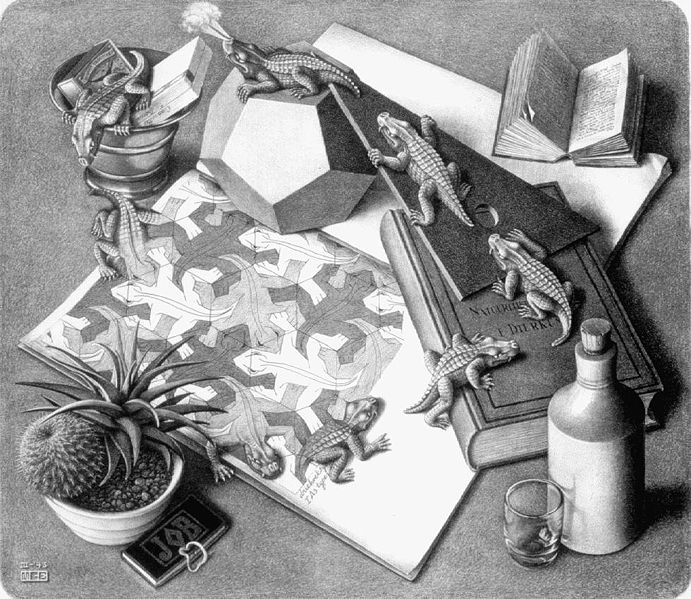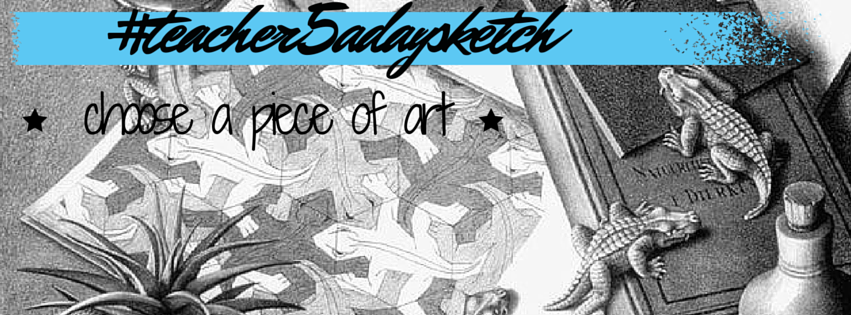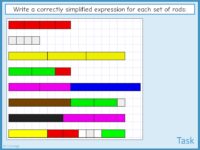Today’s prompt was “choose a piece of art with one idea of you might use it in the classroom”. As a maths teacher, I’ve predictably picked my favourite piece of artwork by M.C. Escher – when I was little, someone bought me a postcard book of his work, and I still have the postcards in my display folder.
A few years ago, I got a jigsaw puzzle of this monstrosity:

It is hands-down the most difficult jigsaw I’ve ever done – and I’m including the (incorrectly titled) “Worlds Most Difficult Jigsaw Puzzle – Frogs” in that list. I smashed the frog puzzle in the time between Christmas and New Year; the Escher one took nearly three months and had two cups of tea split over it before it was finished (jigsaw pieces go weirdly thin when they’ve been dunked in tea!).
My favourite Escher picture, though, is Reptiles (which, incidentally, also comes in puzzle form) – I’m pretty bad at analysing art and whatever, so I can’t really explain why I like it so much – I just do!

If we’re spotting the maths in this, though, there’s a couple of things I can talk about:
1. The obvious link to tessellation with the lizards on the page. So many of Escher’s pictures use tessellation very cleverly, and they really enrich a lesson on tessellation and angles – in fact, I enjoy teaching it so much that I’m going to carry on doing so, even though tessellation is no longer technically examined at GCSE.
2. The paperweight is a dodecahedron, one of the five Platonic solids and (using my geeky gamer-type knowledge here) one of only five possible fair dice shapes. If you’re going to extend work on tessellation in 2D, what better way than to talk about why there are only five possible completely regular three-dimensional shapes, and I love how this picture ties them together so well.

